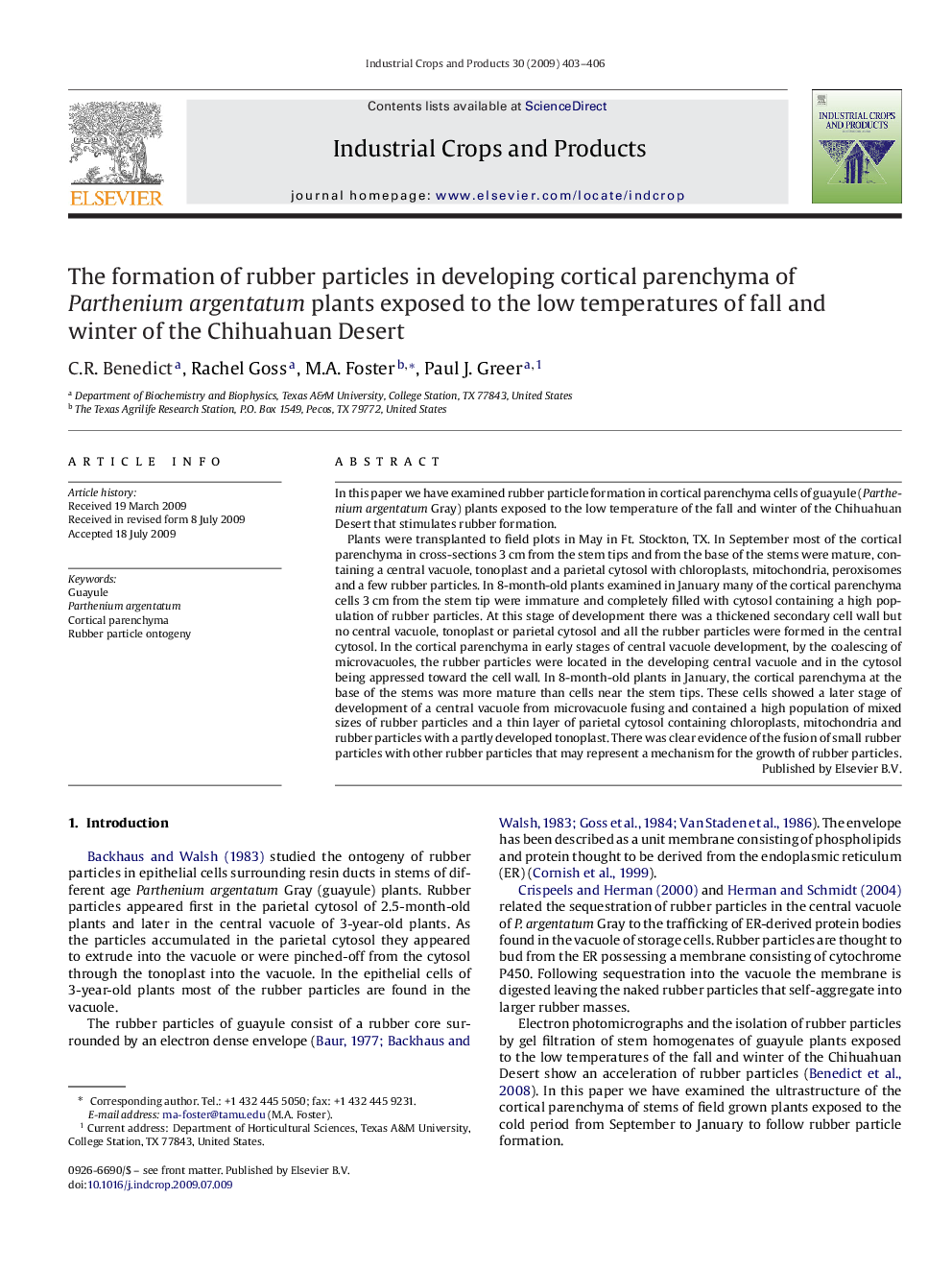| کد مقاله | کد نشریه | سال انتشار | مقاله انگلیسی | نسخه تمام متن |
|---|---|---|---|---|
| 4514845 | 1624872 | 2009 | 4 صفحه PDF | دانلود رایگان |
عنوان انگلیسی مقاله ISI
The formation of rubber particles in developing cortical parenchyma of Parthenium argentatum plants exposed to the low temperatures of fall and winter of the Chihuahuan Desert
دانلود مقاله + سفارش ترجمه
دانلود مقاله ISI انگلیسی
رایگان برای ایرانیان
موضوعات مرتبط
علوم زیستی و بیوفناوری
علوم کشاورزی و بیولوژیک
علوم زراعت و اصلاح نباتات
پیش نمایش صفحه اول مقاله

چکیده انگلیسی
Plants were transplanted to field plots in May in Ft. Stockton, TX. In September most of the cortical parenchyma in cross-sections 3Â cm from the stem tips and from the base of the stems were mature, containing a central vacuole, tonoplast and a parietal cytosol with chloroplasts, mitochondria, peroxisomes and a few rubber particles. In 8-month-old plants examined in January many of the cortical parenchyma cells 3Â cm from the stem tip were immature and completely filled with cytosol containing a high population of rubber particles. At this stage of development there was a thickened secondary cell wall but no central vacuole, tonoplast or parietal cytosol and all the rubber particles were formed in the central cytosol. In the cortical parenchyma in early stages of central vacuole development, by the coalescing of microvacuoles, the rubber particles were located in the developing central vacuole and in the cytosol being appressed toward the cell wall. In 8-month-old plants in January, the cortical parenchyma at the base of the stems was more mature than cells near the stem tips. These cells showed a later stage of development of a central vacuole from microvacuole fusing and contained a high population of mixed sizes of rubber particles and a thin layer of parietal cytosol containing chloroplasts, mitochondria and rubber particles with a partly developed tonoplast. There was clear evidence of the fusion of small rubber particles with other rubber particles that may represent a mechanism for the growth of rubber particles.
ناشر
Database: Elsevier - ScienceDirect (ساینس دایرکت)
Journal: Industrial Crops and Products - Volume 30, Issue 3, November 2009, Pages 403-406
Journal: Industrial Crops and Products - Volume 30, Issue 3, November 2009, Pages 403-406
نویسندگان
C.R. Benedict, Rachel Goss, M.A. Foster, Paul J. Greer,